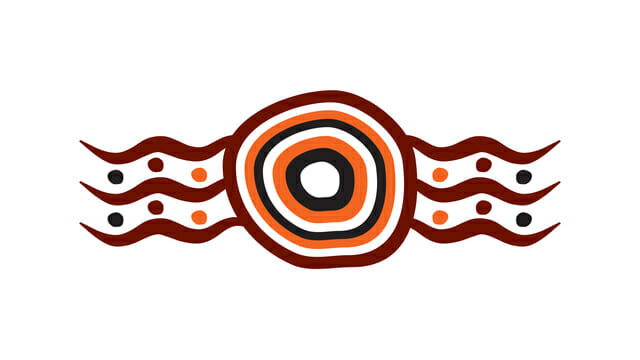In New South Wales, pest control in rental properties is a common concern that can lead to disputes if responsibilities are not understood and communicated.
When it comes to pest control, tenants are typically responsible for the eradication if the infestation occurs due to their activities or lack of cleaning. For instance, not disposing of rubbish appropriately might attract pests, making the tenant responsible for addressing the problem.
Conversely, landlords are expected to handle pest invasions that result from structural issues or were present before the tenant moved in.
Contents
Overview of Tenant and Landlord Responsibilities
In New South Wales (NSW), the responsibility for pest and vermin control in rental properties is shared between tenants and landlords.
Landlord Responsibilities
Structural Maintenance
Landlords are obligated to maintain the structural integrity of their properties. This includes sealing gaps, fixing holes, and ensuring the property does not offer easy access to pests like rats, mice, or cockroaches.
The upkeep of the property is vital in preventing a pest problem, which is more likely to occur if elements such as cracks in walls or broken roof tiles go unrepaired.
Professional Pest Control Services
At the commencement of a tenancy or when a pest problem arises, the landlord may need to arrange and pay for professional pest control services. This is especially crucial when pests such as termite infestations threaten living conditions or the property itself.
If a tenant reports the presence of pests, whether due to past issues or due to weather conditions, it is the landlord’s responsibility to respond to the tenant or their property manager promptly.
Tenant Responsibilities
Reporting Pests
Tenants should immediately report pest or vermin infestations to their landlord or property manager. This action allows for timely interventions and reduces the likelihood of extensive pest-related damages or health issues.
Maintaining Hygiene
Tenants must maintain a clean living environment to deter pests. Regular cleaning, proper food storage, and rubbish disposal are the tenant’s responsibility as a preventative measure against pests.
Minor Pest Prevention
For minor pest issues, such as ants or spiders, tenants may be responsible for managing these themselves. This can include using store-bought sprays, baits, or traps to address the immediate concern. However, they should inform the landlord if the issue persists or escalates.
In the case of strata-managed properties, pest issues in common areas are typically handled by the body corporate.
What the Residential Tenancies Act Says
The Residential Tenancies Act in New South Wales provides a legal framework for the rights and responsibilities of landlords and tenants in rental agreements.
When the Tenant Is Responsible
Tenants may find themselves responsible for managing pest issues in the following situations:
- Contribution to the Problem: If it’s determined that the tenant’s actions or lack of action have contributed to a pest infestation, they are typically expected to address the issue. This could include leaving food out, not securing garbage, or introducing infested furniture.
- After Moving In: Assuming the tenant has conducted a thorough inspection and reported any issues at the start of their tenancy, any later pest problems are generally their responsibility, particularly if the infestation is due to the tenant’s living habits or cleanliness issues.
- Pets: Tenants who own pets are also responsible for controlling any pests, such as fleas, that are associated with their animals.
For more detailed information, it’s advisable to refer to the guidelines provided by NSW Fair Trading or the individual lease agreement.
When the Landlord Is Responsible
In New South Wales, the Residential Tenancies Act 2010 stipulates that pest control can fall upon the landlord under specific circumstances:
- Before Tenancy Commences: If there is evidence of pests or vermin such as ants, cockroaches, or rodents already present when a tenant has not yet moved in, the landlord is responsible for rectifying the issue. The property must be handed over in a clean and habitable state, free from infestations.
- Structural Issues: When pests infiltrate due to structural deficiencies, it is the landlord’s duty to manage repairs to prevent pest entry. The landlord must address problems like holes, cracks, or other entry points allowing pest access.
- During Tenancy: Landlords are also responsible for pests resulting from natural events or inherent issues with the property. This includes circumstances such as bird or possum nests causing problems externally, or when pests like termites appear regardless of the tenant’s actions.
- Security Measures: To ensure the property remains secure against pests, landlords must provide and maintain appropriate locks or security devices. This is an essential term of every tenancy agreement in NSW.
Best Practices for Pest Control Treatment
When it comes to pest control in rental properties throughout New South Wales (NSW), there are proactive steps both landlords and tenants can take to minimise the risk of infestation.
Both parties should also consider consulting with professional exterminators for advice on best practices in pest control specific to the property’s area and type.
Key Takeaways
- Responsibilities for pest control in rentals vary by situation and state regulations.
- Landlords are typically responsible for pest control before a tenant moves in and for structural issues causing pest problems.
- Tenants may be responsible for managing pests caused by their activities or lack of cleanliness.
- Both parties should check local regulations and lease agreements to clarify responsibilities.
Work with the Tenancy Experts
Whether you’re a landlord or a renter, if you’re looking for an award-winning property manager to work with, contact Leah Jay.
Leah Jay is an expert team of property managers and would be happy to assist you with all queries around leasing and property management. Contact the team here.




